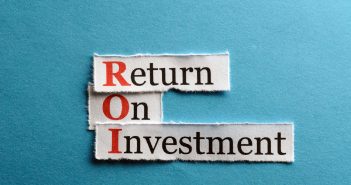
Commercial property leaping ahead than residential
The Indian real estate market has matured to the extent that it is seen as the best investment instrument, as a recent survey by ASSOCHAM points out.

The Indian real estate market has matured to the extent that it is seen as the best investment instrument, as a recent survey by ASSOCHAM points out.

Jones Lang LaSalle’s second quarter 2011 Global Market Perspective, predicts this year will be the strongest performance and real estate trade volume since the market height of 2007.

Track2Realty-Agencies: Azure Capital, the promoters of India Realty Fund I, launched its India Realty Fund-II (IRF2), a rental yield fund that focuses on commercial properties across the top seven cities of India. The size of the fund is Rs 250 crores with an additional Green shoe option of Rs 250 crores aggregating to Rs 500 crores.

Mumbai recorded the highest potential SM REIT-ready completed office stock of ~75 mn. sq. ft. as of June’24, with around 10+ mn. sq. ft. of upcoming supply by 2026. Delhi-NCR recorded a completed SM REIT-ready potential stock of 70+ mn. sq. ft., followed by Bengaluru with 50+ mn. sq. ft. and Hyderabad with 30+ mn. sq. ft.. It is estimated that cumulatively, Delhi-NCR, Bengaluru and Hyderabad could add an additional supply of potential SM REIT-worthy stock of ~36 mn. sq. ft. by 2026. Other cities such as Pune, Kolkata, and Chennai recorded 25+ mn sq. ft. of completed supply as of June’24. It is estimated that Pune, Kolkata and Chennai would cumulatively record additional supply of potential SM REIT-worthy stock of ~14 mn. sq. ft. over the next two years.

With a wealth of INR 1,24,420 crore, Rajiv Singh from DLF leads the 2024 GROHE-Hurun India Real Estate Rich, followed by Mangal Prabhat Lodha from Macrotech Developers with INR 91,700 crore at the second spot, and Gautam Adani & family from the Adani Realty with INR 56,500 crore at third. Of the top 10 on the real estate rich list, five are from Bengaluru and four from Mumbai.

Analysts tracking the market believe lease model is always easy and better in comparison to the sales model in commercial property. For a lessee it gives a strategic option of rethinking if it is not giving the desired outcome considering all different aspects and factors involved in any particular kind of business. For a developer also, it works as an indirect sales model where a developers can comfortably sale the lease area to an investor who can enjoy both the benefits of property appreciation as well as the lease money.

The months before the festive season are generally lull for the property market. Indians are mentally wired to buy the high valuables on the auspicious dates during the festivals. However, this seems to be changing in the property market this time around, as economic rationale indicates preference over religious beliefs. The vast majority of the home buyers anticipate price appreciation during the festive season.

Stock market is generally defined as the “Bull market versus ‘Bear Market’. In real estate, the expression has generally been all about ‘Bullish Market’, ‘Upbeat market’, ‘Wait & Watch Market’, and ‘Pessimist Market’. ‘Bear Market’ as a term has generally not been used in the context of the housing market. Track2Realty questions why? Is it because a ‘Bear Market’ is just not possible in real estate? Or is it because real estate as an asset class has an altogether different means of cost & benefit analysis.

Projects worth INR 4,64,300 crore for a total of 575,900 units are already significantly behind schedule. These 5,75,900 units have been stuck since 2013 or before. However, what is even more disturbing than these staggering number is the fact that in many of the states RERA has been diluted to the extent that it allows the erring developers with the existing projects to get away with the fault lines.

Let’s get straight into this question, which has been a concern among all stakeholders – financial planners, property owners, investors and prospective buyers – over the last few years. And only because real estate, particularly residential, did not yield the same returns as it did during its Golden Era of the early 2000s.
